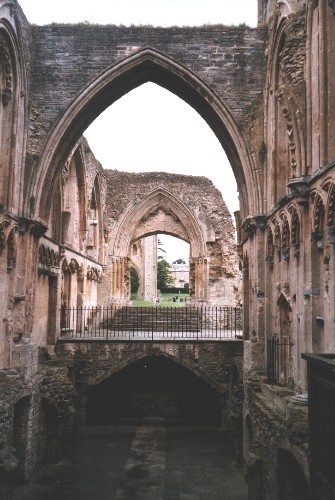
Glastonbury has strong connections
with the Arthurian legend and the Abbey is said to be the mythical King's
final resting place. In
1191 the Abbey's monks excavated the graveyard south of the Lady Chapel
and unearthed a
stone slab, beneath which
was a lead cross bearing an inscription in Latin which read,
"Here lies
buried the renowned
King Arthur in the Isle
of Avalon". The
monks dug deeper and discovered a coffin made from a hollowed-out log inside
which were the remains of
a tall man with a damaged skull. There were also some smaller bones and
a lock of hair. These
were said to be the remains
of Arthur and Guinevere and were placed in caskets. In 1278 King Edward
I visited the Abbey
and presided over the re-interment
of the bones in a black marble tomb in front of the high altar. They remained
at this spot
until the Abbey was ransacked
during the Dissolution, after which they were never seen again. It is worth
noting that
the discovery of the remains
was made just seven years after the church had been destroyed by fire,
and it is likely
that the monks perpetrated
a hoax in order to encourage more pilgrims to visit Glastonbury. There
is also a local
tradition that Joseph of
Arimathea brought the Holy Grail to Glastonbury and buried it above the
spring.